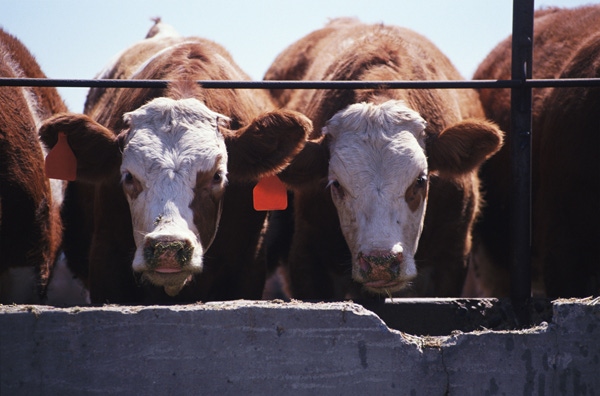
Iowa and California won big for growth in earnings, jobs and tax revenue from animal agriculture, according to the study. Iowa added more than 19,000 jobs since 2000, while California added more than 17,000 in the same time period. These states added $176.2 million and $185.5 million in tax revenue respectively.
December 1, 2011

The soybean checkoff talks a lot about U.S. soybean farmers’ No. 1 customers – poultry and livestock farmers. But these sectors impact more than just a soybean farmer’s profit potential. According to a recent soybean-checkoff-funded study, poultry and livestock supported 1.8 million U.S. jobs and added $19 billion in tax revenue annually to the U.S. economy.
“It’s important that we maintain and expand animal agriculture in the United States,” says Laura Foell, a soybean farmer from Schaller, Iowa, and a farmer-leader for the United Soybean Board (USB). “It helps grow our U.S. soybean industry but is also a way we can keep jobs here and know we are producing safe and reliable food.” That economic impact appears to be more than just a fad. In fact, the poultry and livestock sectors increased household incomes by more than $4 billion during the last decade alone. Nearly 70 percent of that growth occurred west of the Mississippi River or right on its borders, but trends show growth occurring more evenly throughout the country.
“This study shows the importance of animal agriculture not only to soybean farmers, but also to our local, state and national economies,” adds Foell. “And animal agriculture helps local businesses by purchasing goods in local stores and creating local jobs.”
Iowa and California won big for growth in earnings, jobs and tax revenue from animal agriculture, according to the study. Iowa added more than 19,000 jobs since 2000, while California added more than 17,000 in the same time period. These states added $176.2 million and $185.5 million in tax revenue respectively, the study found.
Poultry and livestock consume 98 percent of domestic soybean meal each year and help increase the value of U.S. soybeans. The checkoff study showed most recently that consumption equaled 30 million tons of soybean meal, or the meal from approximately 1.2 billion bushels of soybeans annually. To read the full study on the economic impact of animal agriculture, visit http://tinyurl.com/checkoffeconomics. USB is made up of 69 farmer-directors who oversee the investments of the soybean checkoff on behalf of all U.S. soybean farmers. Checkoff funds are invested in the areas of animal utilization, human utilization, industrial utilization, industry relations, market access and supply. As stipulated in the Soybean Promotion, Research and Consumer Information Act, USDA’s Agricultural Marketing Service has oversight responsibilities for USB and the soybean checkoff.
For more information on the United Soybean Board, visit www.unitedsoybean.org.
About the Author(s)
You May Also Like



